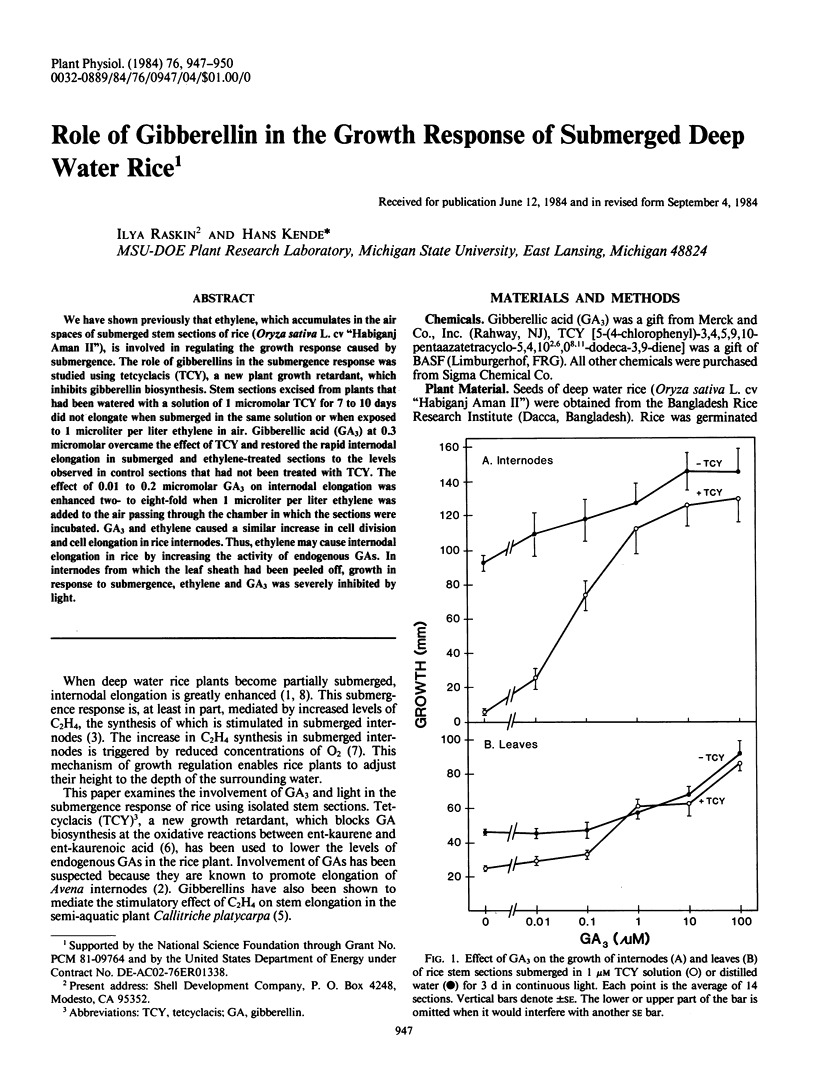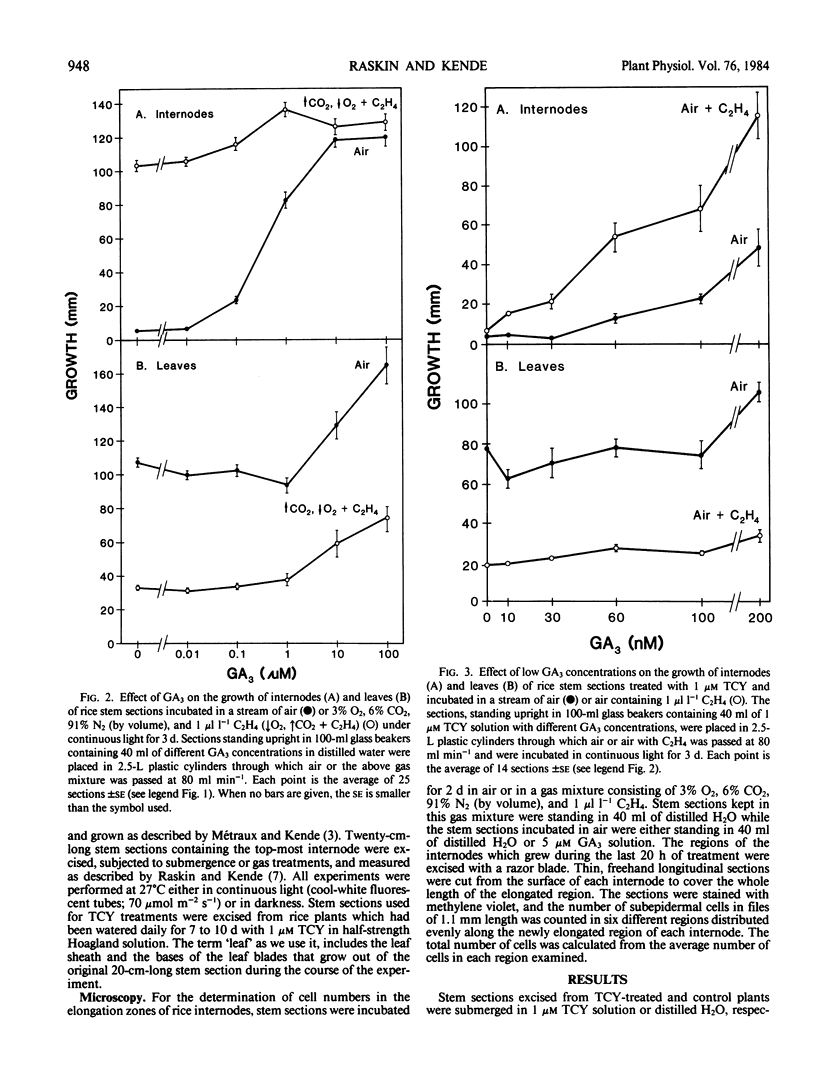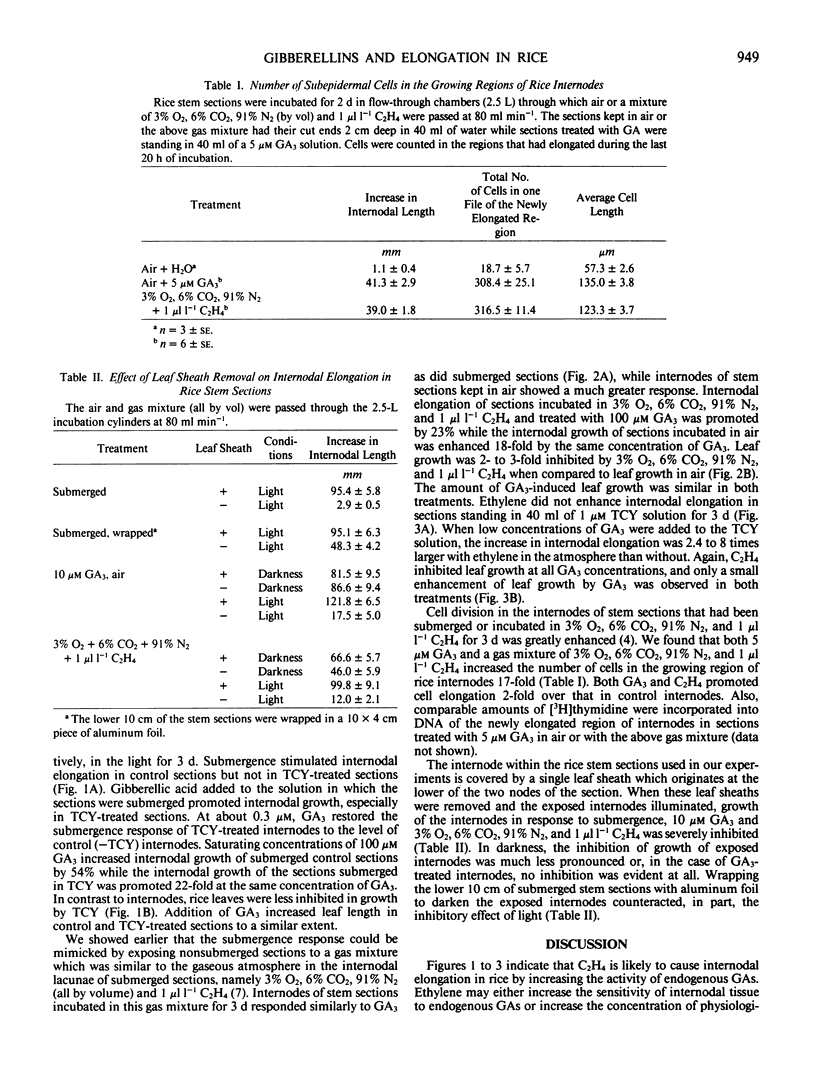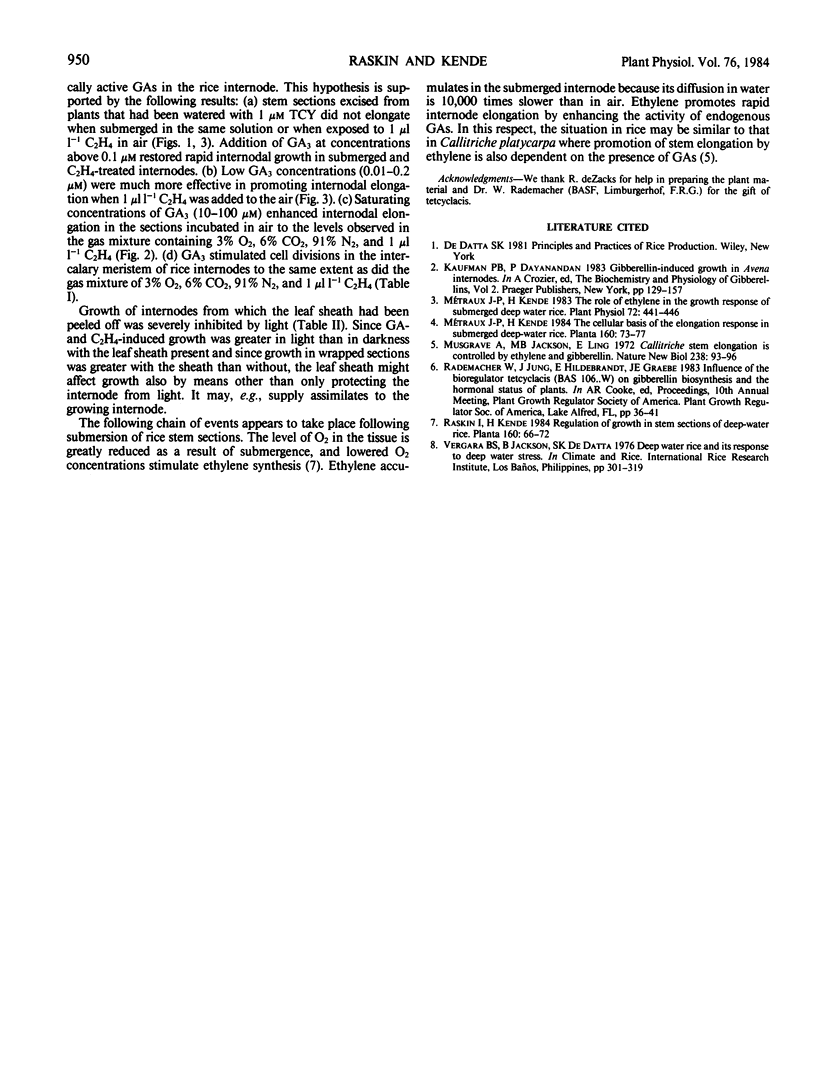Abstract
We have shown previously that ethylene, which accumulates in the air spaces of submerged stem sections of rice (Oryza sativa L. cv “Habiganj Aman II”), is involved in regulating the growth response caused by submergence. The role of gibberellins in the submergence response was studied using tetcyclacis (TCY), a new plant growth retardant, which inhibits gibberellin biosynthesis. Stem sections excised from plants that had been watered with a solution of 1 micromolar TCY for 7 to 10 days did not elongate when submerged in the same solution or when exposed to 1 microliter per liter ethylene in air. Gibberellic acid (GA3) at 0.3 micromolar overcame the effect of TCY and restored the rapid internodal elongation in submerged and ethylene-treated sections to the levels observed in control sections that had not been treated with TCY. The effect of 0.01 to 0.2 micromolar GA3 on internodal elongation was enhanced two- to eight-fold when 1 microliter per liter ethylene was added to the air passing through the chamber in which the sections were incubated. GA3 and ethylene caused a similar increase in cell division and cell elongation in rice internodes. Thus, ethylene may cause internodal elongation in rice by increasing the activity of endogenous GAs. In internodes from which the leaf sheath had been peeled off, growth in response to submergence, ethylene and GA3 was severely inhibited by light.
Full text
PDF



Selected References
These references are in PubMed. This may not be the complete list of references from this article.
- Métraux J. P., Kende H. The role of ethylene in the growth response of submerged deep water rice. Plant Physiol. 1983 Jun;72(2):441–446. doi: 10.1104/pp.72.2.441. [DOI] [PMC free article] [PubMed] [Google Scholar]


